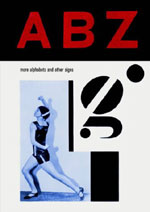The ABZ of QSL
| |

| One of my favourite scenes in any Tintin book is the helicopter chase in The
Calculus Affair. It's the scene in which a sticking plaster plays a magnificent supporting role to Captain Haddock's radio exchange with insurance agent Jolyn Wagg, Wagg being a ham radio buff and idiotically assuming that Haddock's call for help and description of their chase of Calculus' kidnappers is simply the exuberance of another radio fan. It's a scene that has forever coloured my opinion of the ham radio operator.
I was intrigued then to see Danny Gregory and Paul Sahre's Hello World: A Life In Ham Radio (ú16.99 - Princeton Architectural Press), and wondered if by any chance Herge's scene would be mentioned. It's not, but then that's hardly a surprise, since Hello World, whilst being a history of ham radio in general is also specifically about the life of one Jerry Powell, an avid ham operator based in Hackensack, New jersey, from 1928 until his death in 2001. The book jumps neatly between background info on amateur radio, global historical context and, most intriguingly, the multitude of other ham buffs around the world that Jerry ´met' through the airwaves. As such, this is also a document of a great Mail Art project, thanks to the QSL cards that the fans exchange. QSL cards are quite simply specially designed postcards that the hams send as physical proof that their radio contact actually took place. They're all unique and include the station call sign and details of the gear used, as well as more information about the identity of the ham themselves. These QSL cards are often examples of terrific vernacular typography, design driven primarily by function, and the inclusion of so many examples makes Hello World a unique crossover title, of interest to hams, mail artists, and graphic designers. Or, indeed, to anyone interested in the quirkier side of life. |

| Also of interest to
graphic designers, although perhaps less likely to crossover to anyone else,
is ABZ: more alphabets and other signs (ú25 - Redstone Press). A successor (or more likely companion) to 1991's Alphabets
and Other Signs, this edition contains reproductions of all kinds of intriguing examples of typography and graphic design to amuse and inspire: a 1926 photo-constructovist alphabet designed by the great Czech artist Karel Teige featuring a dance pose for every letter; pages from the 1937 ´anti facist schoolbook', published by the Spanish Republicans as a primer for illiterate soldiers in their civil war; the first scientifically reliable charts for eye-tests, designed in 1862 by Utrecht optometrist Herman Snellen; Tolmer's ´Mis en page: the theory and practice of lay-out', as printed in The
Studio magazine of 1932; a multitude of assorted other examples of classic avant-garde typography and page design. ABZ is an essential source for any self-respecting designer, as well as a thoroughly diverting ´read' for
anyone interested in classic 20th Century modernism.
© 2003 Alistair Fitchett |